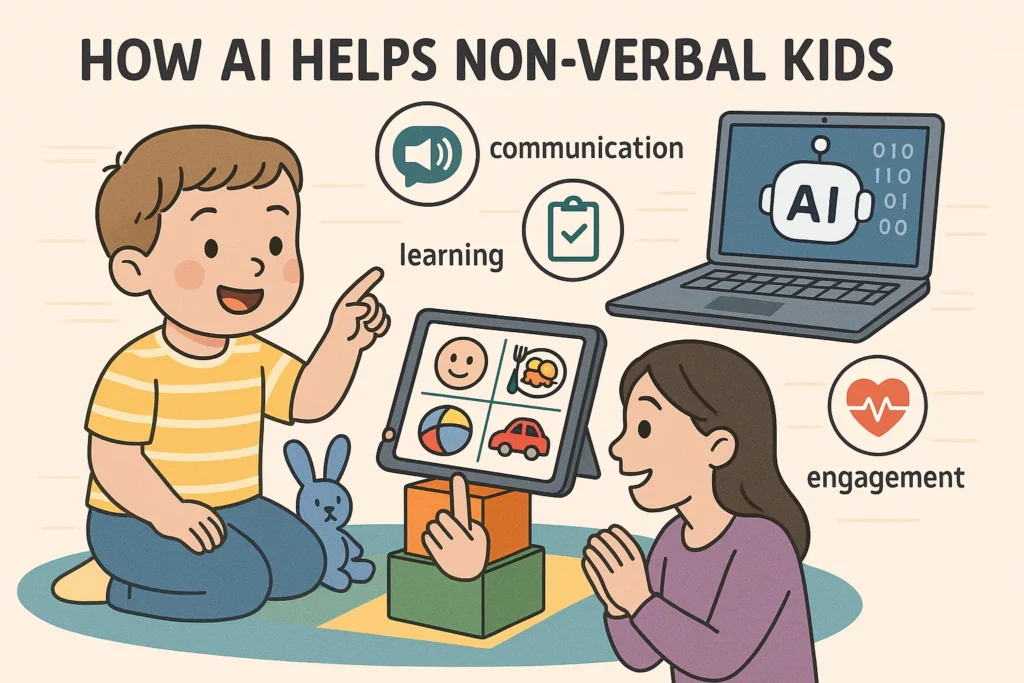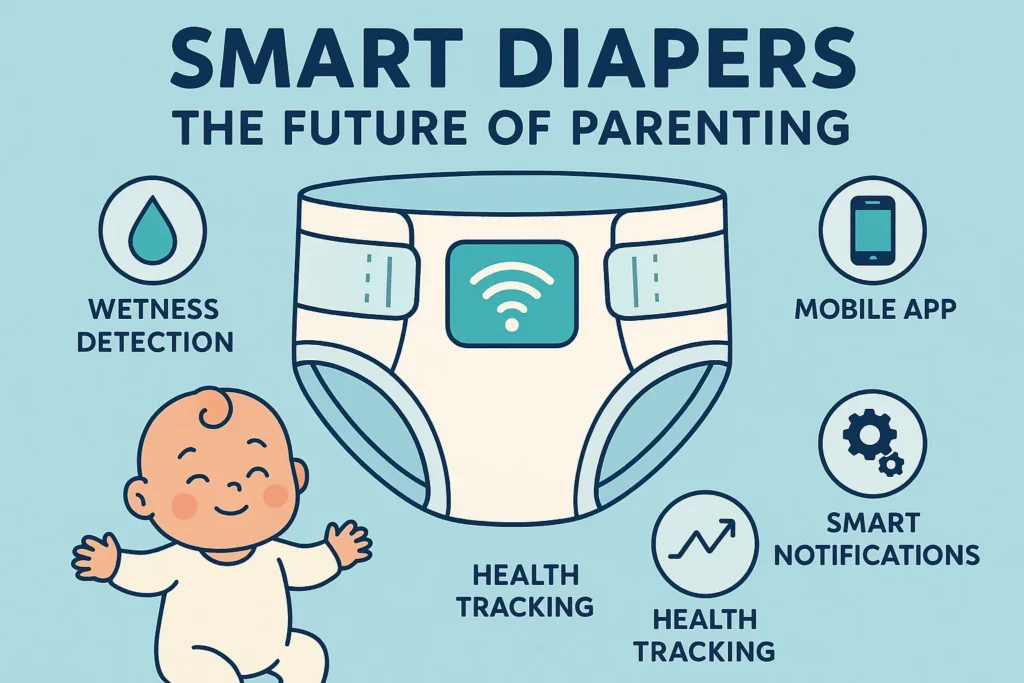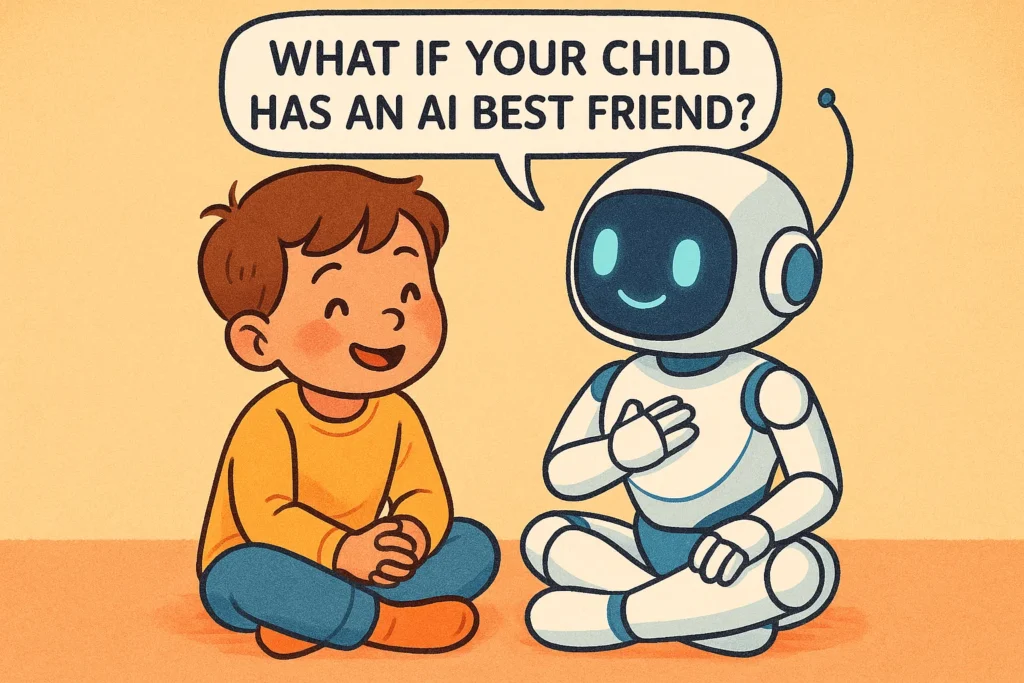🌟 Introduction: Giving Every Child a Voice
How AI Helps Non-Verbal Kids: Communication is a basic human need — yet for non-verbal children, expressing thoughts can be incredibly challenging. The good news? Artificial Intelligence (AI) is changing that. Through smart technologies, AI is helping children who can’t speak find new ways to connect with the world around them.
At AiBlogQuest.com, we believe in the power of AI to empower every voice — especially those who’ve struggled to be heard. Let’s explore how AI is revolutionizing communication for non-verbal kids.
🤖 What Does “Non-Verbal” Mean?
A non-verbal child may have difficulty using spoken language due to conditions such as:
-
Autism Spectrum Disorder (ASD)
-
Cerebral Palsy
-
Down Syndrome
-
Speech or developmental delays
These children often rely on alternative methods such as gestures, symbols, or technology-assisted communication — and that’s where AI tools step in.
💬 7 Powerful Ways AI Helps Non-Verbal Kids Communicate
1. AI-Powered Speech Generators
AI apps can translate text, gestures, or symbols into spoken words. For example, a child tapping an icon of “water” on a tablet triggers a natural voice that says, “I want water.”
2. Emotion Recognition Tools
Some AI systems detect facial expressions or tone to interpret a child’s emotional state — helping caregivers respond better to frustration, joy, or anxiety.
3. Eye-Tracking Communication Systems
AI-based eye-tracking devices let children select icons or letters just by looking at them. This is especially useful for kids with limited motor control.
4. Gesture and Sign Language Recognition
AI cameras can recognize hand gestures and convert them into text or audio — allowing smoother conversations between non-verbal kids and others.
5. Customized Voice Profiles
Advanced tools can create personalized synthetic voices that match a child’s age, gender, and personality — making communication feel more natural.
6. Predictive Text and Visual Cues
AI learns a child’s communication habits and predicts what they might want to say next, speeding up expression and reducing frustration.
7. Therapy Support and Progress Tracking
Speech therapists use AI dashboards to monitor improvements in communication, track word use, and adapt sessions accordingly.
🌈 Benefits for Families and Therapists
-
Enhances self-expression and confidence
-
Reduces communication barriers
-
Improves parent-child bonding
-
Supports inclusive education and social interaction
-
Provides continuous therapy insights through data
⚙️ Challenges and Ethical Considerations
While AI for non-verbal communication brings hope, it’s essential to handle it responsibly.
-
Privacy: Sensitive data like voice and facial patterns must be protected.
-
Affordability: Advanced devices can be costly for some families.
-
Human connection: AI should complement, not replace, real human empathy and interaction.
🔗 Useful Links – AiBlogQuest.com
-
AI-Powered Communication Boards
-
AI for Tracking Therapy Progress
❓ FAQs
Q1. Can AI completely replace speech therapy?
No. AI enhances therapy but cannot replace human expertise. It provides additional tools to improve communication practice.
Q2. Are these AI tools easy for kids to use?
Yes, most are designed with simple icons, visuals, and adaptive interfaces suitable for children of all abilities.
Q3. Do AI systems support multiple languages?
Many modern AI-based AAC (Augmentative and Alternative Communication) tools support multiple languages and even local dialects.



